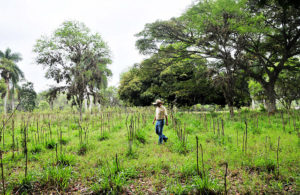
Originally posted at ICRAF’s Agroforestry World Blog
The Paris climate change agreement came into force on 4 November 2016—an unprecedented event. And the COP22 climate talks here in Marrakech have been all about turning that agreement into action on the ground. The big question for all, is: how do we reach the triple win of development, adaptation and mitigation without degrading our natural resource base?
Trees in forests and on agricultural landscapes are central to climate change mitigation and adaptation, and to delivering on the Paris Agreement. And they are central to delivering vital livelihood benefits and income, both for the rural population and, via the provision of a diversity of products and services, for urban consumers.
Agroforestry—agriculture with trees—is also instrumental to reaching the Sustainable Development Goals (SDGs) that aim to eradicate hunger, reduce poverty, provide affordable and clean energy, protect life on land, reverse land degradation and combat climate change. Because of the carbon sequestration capacity of trees in biomass and soils, agroforestry can contribute greatly to assist countries to reach their Nationally Determined Contributions (NDCs).
The World Agroforestry Centre (ICRAF) is supporting national governments in Africa, Asia and Latin America in developing the tools, knowledge, options and capacity needed to successfully implement sustainable agricultural solutions. We call for:
- Scaling up agroforestry as a solution for climate change adaptation and mitigation via Nationally Determined Contributions;
- Raising the investment in providing scientific evidence of agriculture’s contribution to climate change mitigation and adaptation;
- Reducing land degradation and deforestation through agriculture with trees;
- Including sustainably produced bioenergy to the Sustainable Energy for All (SE4ALL) initiative’s portfolio of options to end energy poverty.
We also have great optimism as private financing emerges to enable such investments to contribute to public goods around climate change, sustainable environmental stewardship and farmers’ livelihoods. In particular, the Livelihoods Fund and Tropical Landscape Finance Facility are showing tremendous leadership in making it happen at large scale.











